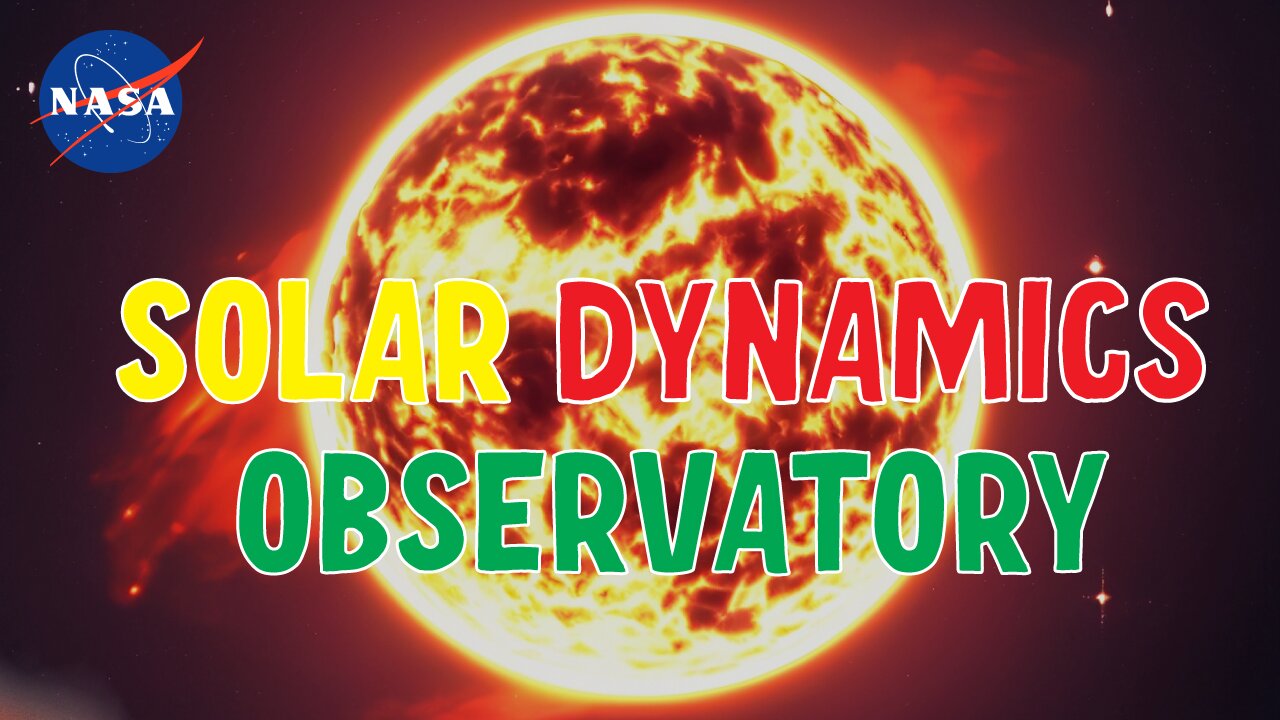Premium Only Content

Six Years of SDO in Stunning Ultra-HD
The sun is in a constant state of change, and NASA's Solar Dynamics Observatory (SDO) is perpetually vigilant. Launched on February 11, 2010, the SDO maintains an uninterrupted watch over the entire solar disk, providing an exceptional perspective on the elegant choreography of solar materials coursing through the sun's outer atmosphere, the corona. The SDO's sixth year in orbit was no exception, and this video presents the entirety of its sixth year, spanning from January 1, 2015, to January 28, 2016, condensed into a captivating time-lapse sequence.
When viewed at its highest quality on YouTube, this video offers an ultra-high-definition experience at 3840x2160 resolution, with a frame rate of 29.97 frames per second. Each frame in this sequence corresponds to a two-hour interval. Alternatively, a downloadable version is available with a faster frame rate of 59.94 frames per second, where each frame represents a one-hour span. The SDO's Atmospheric Imaging Assembly (AIA) captures an image of the sun every 12 seconds in ten different wavelengths. The visuals showcased here are based on the 171 angstroms wavelength, situated in the extreme ultraviolet range, revealing solar material at approximately 600,000 kelvins (equivalent to about 1,079,540 degrees Fahrenheit). In this wavelength, the sun's 25-day rotation becomes prominently visible.
Throughout the video, the sun subtly expands and contracts in apparent size due to the varying distance between the SDO spacecraft and the sun itself. Nevertheless, the imagery remains strikingly consistent and stable, despite the SDO orbiting Earth at a staggering 6,876 miles per hour, while Earth completes its own orbit around the sun at a remarkable 67,062 miles per hour.
Scientists scrutinize these images to gain a deeper understanding of the intricate electromagnetic processes responsible for the sun's perpetual activity, which can occasionally have repercussions closer to Earth. Solar phenomena like flares and coronal mass ejections can disrupt technology in space. Furthermore, studying our nearest star provides valuable insights into the behavior of other stars in our galaxy. NASA's Goddard Space Flight Center in Greenbelt, Maryland, played a pivotal role in constructing, operating, and managing the SDO spacecraft for NASA's Science Mission Directorate in Washington, D.C.
Credit: NASA's Goddard Space Flight Center/Wiessinger
Music: "Tides," a track available from Killer Tracks
#NASADataViz #4KVisualizations #StunningNASA #UltraHD #SpaceExploration #Earth #Sun #Moon #Astronomy #ScientificVisualizations #NASAInsights
-
 LIVE
LIVE
Barry Cunningham
1 hour agoPRESIDENT TRUMP SEEMS READY TO DISMANTLE THE DEEP STATE ONCE AND FOR ALL! | JAMES COMEY UPDATE
1,219 watching -
 LIVE
LIVE
Simply Bitcoin
1 hour ago $1.01 earnedTHIS Middle Eastern Central Bank is Printing Fiat To Buy MicroStrategy | EP 1246
391 watching -
 2:14:52
2:14:52
Tim Pool
2 hours agoTim Pool VS Adam Conover DEBATE | The Culture War Podcast
312K175 -
 LIVE
LIVE
The Big Mig™
1 hour agoGlobal Finance Forum From Bullion To Borders We Cover It All
2,216 watching -
 1:21:05
1:21:05
The Rubin Report
3 hours agoTulsi Gabbard Stuns Host with Plan to Jail James Comey After His Threat to Trump
59.3K46 -
 DVR
DVR
The Mel K Show
2 hours agoMORNINGS WITH MEL K - Comey Crossed the Rubicon, House of Criminal Cards is Shaking, No One is Above the Law 5/16/25
21.6K4 -
 LIVE
LIVE
The Dana Show with Dana Loesch
1 hour agoJAMES COMEY UNDER FEDERAL INVESTIGATION | The Dana Show LIVE on Rumble!
508 watching -
 1:00:59
1:00:59
Blockchain Basement
1 hour agoBuying Burgers With Bitcoin! (The Ultimate RUGPULL!)
11.2K -
 51:53
51:53
Steven Crowder
4 hours agoGuru Crowder Takes on Looksmaxxing, The Friend Zone, and Getting Cold Feet
178K85 -
 LIVE
LIVE
The Shannon Joy Show
2 hours ago🔥🔥Freestyle Friday And A Meet Up With Local NY Parent Advocates Trying To SAVE OUR SCHOOLS From Radical Indoctrination & Corruption🔥
165 watching